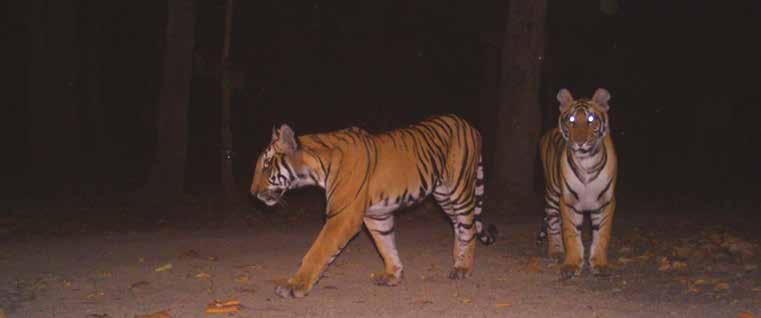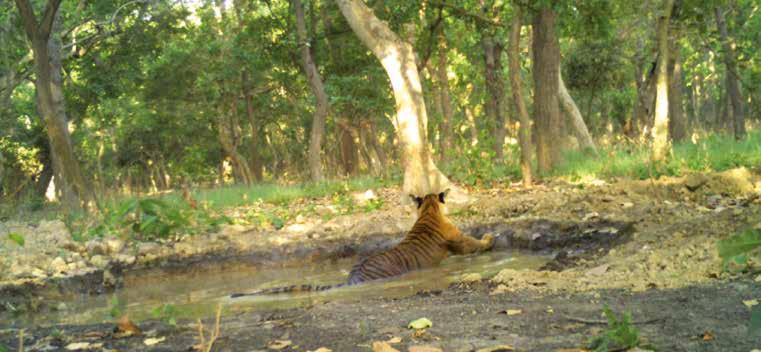
2 minute read
BRINGING BACK THE ROAR
©NTCA / UPFD / WWF-India
©NTCA / UPFD / WWF-India
Advertisement

©NTCA / UPFD / WWF-India Tigers caught on camera trap in Pilibhit Tiger Reserve, India

Tigers caught on camera trap in Pilibhit Tiger Reserve, India
Tigers caught on camera trap in Pilibhit Tiger Reserve, India
©Shutterstock / Anuradha Marwah / WWF-Sweden

Tigers inhabit just 5% of their historic range. Since 1700s tigers have been lost from half of their former Range Countries including, most recently, Lao PDR and Cambodia. In many other places remaining tigers are reduced to a few small pockets of habitat.
Expanding the global range of tigers will be crucial to both building a resilient global wild tiger population and effectively meeting the global 30x30 goals to protect 30% of the planet by 2030. Together with indigenous peoples and local communities, WWF supports tiger range recovery through both active tiger translocations and reintroductions and creating the conditions on the ground for natural tiger dispersal and colonisation of new landscapes.
Reintroducing tigers to an area takes years of planning and preparation, and we are attempting the first international reintroductions ever for wild tigers.
BRINGING BACK THE ROAR

©DoFSC / WWF-Nepal High altitude tiger spotted in early 2020, Mahabharata Range, Nepal

NEPAL’S TIGERS REACH NEW HEIGHTS
In early 2020 camera traps situated at 2500m in the Mahabharata Range of Nepal captured a tiger only a week after they were installed. This record breaking capture was the highest known sighting of a tiger in Nepal and provides solid evidence for tiger conservation in the Mahabharata Range, while expanding Nepal’s known tiger distribution outside the Terai Arc Landscape.
For a second time in 2020 the record for Nepal’s highest altitude tiger sighting was broken. Camera traps set by the Red Panda Network in Ilam spotted a tiger at an incredible height of 3165m, marking the new high altitude presence of tigers in Nepal. The sighting was significant for another reason: it was also the farthest east a tiger had been sighted in the country, making the Kangchenjunga Landscape the land of the tiger.










